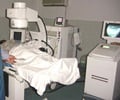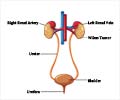
‘Forkhead Box I1, Rh family C glycoprotein and one long non-coding RNA can be used to diagnose chromophobe renal cell carcinoma.’
Read More..Tweet it Now
The U-M analysis, which appears in European Urology, examined RNA sequencing data from more than 1,000 kidney cancer samples combining profiles from Michigan Medicine patients with others in The Cancer Genome Atlas. Read More..
“Our approach identified two genes — Forkhead Box I1 (FOXI1) and Rh family C glycoprotein (RHCG) — and one long non-coding RNA (LINC01187) that are overexpressed in chromophobe renal cell carcinoma and positive in related oncocytic tumors,” says senior study author Rohit Mehra, M.D., an associate professor of pathology at Michigan Medicine and member of the Michigan Center for Translational Pathology.
“We investigated both cancers primary to the kidney as well as those which had spread out, and found strong expression of these three biomarkers,” he adds. “Importantly, we did not find them to be associated with other subtypes of kidney cancer, especially in metastatic state.”
Follow-up work is being conducted to validate the new biomarkers for use in the clinic at U-M and beyond, Mehra notes, where they may be particularly useful in diagnosis of metastatic tumors or a subset of primary tumors that can’t be readily identified under the microscope.
The success of the group’s integrative sequencing analysis approach is helping them develop a more specific kidney cancer diagnostic panel to complement existing tools, Mehra says. He notes the approach allowed the group previously to identify a specific biomarker for another rare kidney cancer called mucinous tubular and spindle cell carcinoma, helping to aid the diagnosis of challenging samples from U-M and other institutions.
Advertisement
Importantly, the study also throws light on possible mechanisms that may underlie a variant of the disease called sarcomatoid ChRCC, where the scientists observed a complete lack of FOXI1 and long non-coding RNA. Loss of FOXI1, a key transcription factor, may contribute to de-differentiation in these tumors which tend to be more aggressive and may require additional therapeutic strategies.
Advertisement
The study was supported by the Michigan Prostate SPORE (2P50CA186786-06), National Cancer Institute (1U01CA214170-01, 1R35CA231996-01) and Michigan Medicine Department of Pathology.
Paper cited: “Next-Generation RNA Sequencing-Based Biomarker Characterization of Chromophobe Renal Cell Carcinoma and Related Oncoyctic Neoplasms,” European Urology. DOI: 10.1016/j.eururo.2020.03.003
Source-Newswise












